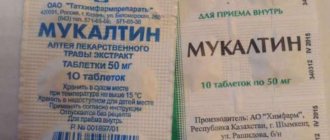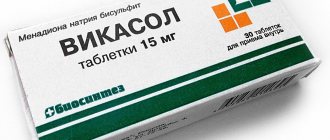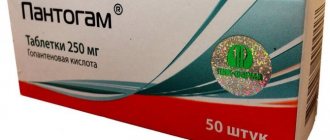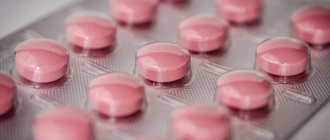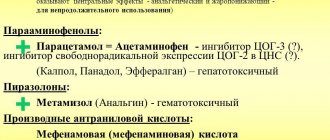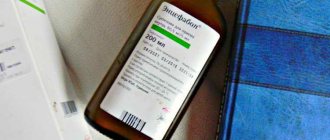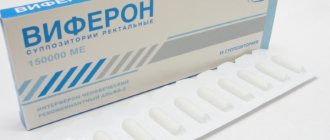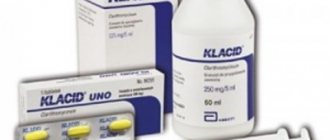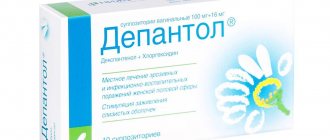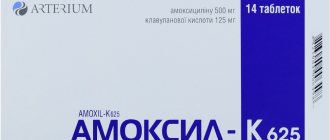Amosin is a drug that belongs to the broad-spectrum antibiotic group of semisynthetic penicillins. Has a bactericidal effect.
The active component inhibits transpeptidase, disrupts the synthesis of peptidoglycan, which is the supporting protein polymer of the bacterial cell wall, during its growth and development, and also provokes bacterial lysis. The medicine has a high degree of acid resistance.
The drug inhibits the activity of:
- streptococci;
- staphylococci;
- shigella;
- salmonella;
- Klebsiella;
- coli;
- causative agent of meningitis;
- sepsis.
Amosin is produced in the form of granules, powder, suspension and solution for intramuscular and intravenous administration of the drug.
The medication is dispensed in pharmacies only with a prescription from the attending physician. The shelf life of the drug is 2 years. The product must be stored in a place protected from light and moisture, at an air temperature of no more than 25°C. The price of Amosin, depending on the dosage form and dosage of the active ingredient, can vary from 50 to 70 rubles.
Description of the medicine
So, let's look at how the drug "Amosin" is positioned in the instructions for use (indications, release forms). The medicine is a semi-synthetic penicillin. A distinctive characteristic of the drug is its wide spectrum of action and high bactericidal effect.
The antibiotic is able to fight many gram-negative and gram-positive microorganisms:
- streptococci;
- staphylococci;
- Klebsiella;
- salmonella;
- Helicobacter pylori;
- gonococci;
- listeria;
- pathogens of meningitis and anthrax.
The drug "Amosin" inhibits the synthesis of substances that are the basis of cell membranes. As a result, their integrity is violated. This leads to the death of bacteria.
As evidenced by the instructions for use attached to the drug “Amosin” (500 mg), the drug has an effect on the body within 15-30 minutes after its use. The beneficial effect lasts for 8 hours.
Once the medication enters the body, it is quickly and almost completely absorbed into the gastrointestinal tract. The active substance of the medicine does not only enter the blood. It penetrates into mucous membranes, bone tissue, organs, and fluids.
Composition and pharmacological action of Amosin
The active compound in any dosage form is amoxicillin in the form of trihydrate. The capsules contain potato starch as an auxiliary component. White gelatin capsules consist of titanium dioxide, methylhydroxybenzoate, propylhydroxybenzoate, acetic acid and gelatin.
The tablets are white or almost white in color and have a flat-cylindrical shape with a score and a chamfer.
The following are used as auxiliary components:
- Potato starch.
- Magnesium stearate.
- Calcium stearate.
- Magnesium hydrosilicate.
- Povidone.
The powder for preparing the suspension has a white color with a yellowish tint and a specific odor. The prepared suspension also has a white with a yellow tint and a specific odor.
Additional connections are:
- polyvinylpyrrolidone;
- glucose;
- trilon B;
- sodium phosphate disubstituted;
- sodium α-glutamate monohydrate;
- food flavoring;
- vanillin;
- sucrose.
The antibiotic Amosin is an antimicrobial drug that has a strong bactericidal effect.
After administration, the tablets are almost completely quickly absorbed into the blood from the gastrointestinal tract. Food intake has no effect on the absorption of the drug. In high concentrations, the active component of the drug is found in plasma, bronchial secretions, sputum, urine, lung tissue, in the tissues of the female genital organs, gall bladder, as well as in the intestinal mucosa.
During the metabolism of amoxicillin, inactive metabolites are formed. 50% of the active component of the drug is excreted unchanged in urine, 20% of the drug is excreted in bile.
It penetrates poorly through the blood-brain barrier, but with inflammation of the meninges, the concentration in the cerebrospinal fluid is about 20% of the level in plasma. The half-life is 1-1.5 hours.
Pros
pros
- Convenient dosage form
- Minimum number of contraindications
- Few side effects
- Possibility of use for the treatment of children from 3 years of age
Cons
Minuses
- Vacation by prescription
- Reduced effectiveness as a result of the emergence of antibiotic resistance in various strains of bacteria
- The development of side effects when using an increased dosage
Release forms
The main active ingredient of the drug is amoxicillin. It is this that has a healing effect on the body. This is what the instructions attached to the drug “Amosin” say.
The release form of the medicine allows you to select the necessary medicine for any category of patients.
After all, the drug is produced in the form of:
- Tablets. In appearance, these are white, flat-cylindrical pills. They may contain the active substance in the amount of: 250 mg, 500 mg.
- Capsules. These are gelatin containers, white. They contain white granules. The dosage of the active substance is 250 mg.
- Powder. It is intended for self-production of the suspension. The powder has a slightly yellowish tint. Has a specific smell. The prepared suspension retains its aroma and yellowish tint. The medication is available in several dosages: 125, 250, 500 mg.
Pharmacological properties
Amosin is an antibiotic with a bactericidal effect. It destroys bacteria. The drug is acid-resistant and is active against staphylococci, streptococci, Neisseria, bacilli, Listeria, Klebsiella, Helicobacter pylori.
Microbes that produce penicillinase are resistant to the action of amoxicillin. When taken orally, the active component is almost completely absorbed in the stomach; food does not affect its absorption. After 1-2 hours, the active substance reaches its maximum concentration.
Amoxicillin is found in sputum, plasma, bronchial secretions, urine, pleural, peritoneal fluid, lung tissue, the contents of skin blisters, intestinal mucosa, prostate, adipose tissue, bones, gall bladder, and penetrates the placenta. The drug weakly penetrates the membranes of the brain. The active substance has a half-life of one and a half hours. 60% of it is excreted in urine, 20% in bile.
Indications for use
The medicine is recommended for use for various bacterial infections that are caused by sensitive microflora. The drug "Amosin" 500 mg instructions for use recommends using it for multiple infections of the respiratory tract, skin, and genitourinary system.
The main indications for prescribing the medication are:
- respiratory diseases (bronchitis, pneumonia);
- pathologies of the ENT organs (tonsillitis, sinusitis, pharyngitis, otitis media);
- ailments of the genitourinary system (pyelonephritis, urethritis, gonorrhea, pyelitis, cystitis);
- gynecological infections (endometritis, cervicitis);
- diseases of the gastrointestinal tract (peritonitis, typhoid fever, enterocolitis, cholangitis, cholecystitis);
- pathologies of soft tissues and skin (erysipelas, impetigo, dermatoses);
- listeriosis;
- leptospirosis;
- borreliosis (Lyme disease);
- dysentery;
- meningitis;
- salmonellosis;
- endocarditis (for preventive purposes);
- sepsis.
Recommended Dosages
How does the instructions for use advise taking the drug “Amosin” (in tablets and capsules)?
The medication summary provides the following recommendations:
- Amosin is intended for oral use in any form.
- The instructions for use advise not to chew or crush the capsules. They should be consumed before or after meals.
- "Amosin 500" (tablets) instructions for use recommends taking it regardless of food. Pills are allowed to be crushed and divided into parts.
- Take the medicine at regular intervals.
- The recommended course of therapy with this drug is determined only by a doctor.
- Adults and children over 10 years of age, if the body weight of the latter is above 40 kg, are prescribed 500 mg of the medicine 3 times a day.
- If the pathology is severe, the doctor may recommend a higher dose of the drug. In this case, the patient is prescribed to take 750-1000 mg 3 times a day.
- How does the instructions for use recommend taking the medicine “Amosin” (in tablets for children from 5 to 10 years old)? Such patients are prescribed to take 250 mg 3 times a day.
- On average, the duration of treatment is 5-12 days.
Doctors have proven that very cheap and long-known drugs can help save lungs during coronavirus.
Most of those who get sick or are afraid of getting sick are worried about fibrotic changes in the lungs
Photo: Mikhail FROLOV
The Covid hospital on the basis of the Medical Scientific and Educational Center (MREC) of Moscow State University named after M.V. Lomonosov received its first patients on April 21 and completed its work on June 13. It turned out that the best results in the treatment of COVID-19 in Moscow were achieved here. Over the entire period, 4 patients died, and among severely ill patients on mechanical ventilation, the mortality rate was less than 14% (for comparison, the average for the city and the world is up to 70 - 80%). 18 doctors out of 220 hospital employees were infected with the coronavirus; there were no deaths among medical staff.
What approaches did the Moscow State University University Clinic use to achieve such results? We continue the conversation with the manager. Department of Therapy, Faculty of Fundamental Medicine, Moscow State University, Head of the Department of Age-Associated Diseases of the Medical Research and Education Center, Doctor of Medical Sciences, Cardiologist Yana Orlova.
COUGH MEDICINE FOR 80 RUBLES
— Most of those who get sick or are afraid of getting sick are worried about fibrotic changes in the lungs. They say that you have developed a special therapy that can reduce the risk of developing fibrosis. Is it possible?!
— Yes, we have launched a corresponding clinical trial. There are no final results yet, but we have proven clinical practice.
- What did you do to save your lungs?
— We used a combination of bromhexine and spironolactone (both are long-known, very cheap drugs. — Ed.). Bromhexine is an expectorant that has been prescribed to patients with pneumonia and cough for many years. At the same time, experimental data have shown that this drug can block a certain enzyme and make it difficult for the coronavirus to penetrate cells. True, we were less counting on this effect in inpatients, since this effect is relevant mainly at the early stage of the disease. But the expectorant effect of bromhexine really helps patients with COVID. I heard that our colleagues in St. Petersburg have launched a study of bromhexine for preventive purposes. We will wait for the results.
18 doctors out of 220 hospital employees were infected with coronavirus; there were no deaths among medical staff
Photo: Ivan MAKEEV
BARRIER TO FIBROSIS
— The second drug, spironolactone, is traditionally widely used in cardiology for the treatment of heart failure and severe hypertension. “It has a slight diuretic, magnesium- and potassium-preserving effect,” continues Yana Orlova. “It has several mechanisms through which it may be useful against coronavirus infection.
Firstly, a mechanism that prevents the development of fibrosis in the body as a whole. There are studies that, in particular, show that spironolactone reduces fibrosis in the heart. At the same time, it is known that the tendency to fibrosis is not local, but systemic - where there is more inflammation, there will certainly be fibrosis. And we see, of course, fibrotic changes with “Covid” in our patients. Therefore, we prescribed spironolactone as a drug to prevent this process.
Secondly, this drug blocks receptors for sex hormones, in particular testosterone. Some published studies suggest that “high testosterone” men get Covid more often and develop more severe fibrotic changes. Therefore, blocking these receptors for several weeks during COVID treatment may be useful in reducing the severity of complications. There is no talk about longer-term use, since male patients are unlikely to agree with a decrease in testosterone levels in the long term.
And perhaps the most important point. In almost all of our patients we observed hypokalemia (decreased potassium levels - Ed.). During coronavirus infection, potassium is intensively excreted from the body, and scientific articles even suggest that hypokalemia serves as a trigger for a cytokine storm. So spironolactone has a real chance of reducing the risk of this dangerous complication. But the main thing, in my opinion, is that a decrease in potassium levels in the body is extremely harmful to the heart and triggers life-threatening rhythm disturbances, increasing the risk of sudden death. We, like everyone else, replenished potassium with IVs, but retaining it in the body with the help of spironolactone turned out to be more effective.
Men definitely get sick more seriously than women; older people are heavier than young people; obese people are heavier than non-overweight patients
Photo: Ivan MAKEEV
WHEN WERE THE PATIENTS DISCHARGED
— Yana Arturovna, how long on average did your patients stay with you?
- About 10 - 14 days. But some even 50 days.
— Have you noticed signs that suggest that the illness of the brought person will most likely take a difficult path?
“Such studies have been conducted around the world, and our clinical practice has confirmed them. Men definitely get sick more seriously than women; older people are heavier than young people; obese people are heavier than patients who are not overweight. Men with the classic male type of baldness, a lot of facial hair, brutal men, one might say, are more seriously ill.
— Under what conditions did you discharge patients?
— We acted as closely as possible to the recommendations of the Ministry of Health: that the temperature for three days should not exceed 37.5 degrees; so that C-reactive protein (an indicator of inflammation) is below 10 mg/l, and saturation, that is, the level of oxygen in the blood, is above 96%.
“THE HEAD OF THE EPIDEMIOLOGY DEPARTMENT WORKED AT THE SANITARY CENTER”
— How often did your doctors and nurses get sick?
— In the first month, no one got sick at all. We have a very powerful epidemiological service. The head of the sanitary-epidemiological department, a senior researcher, competently organized the entire process, and for the first two weeks she personally worked in the sanitary checkpoint at the exit from the “red zone” and helped doctors and nurses, exhausted after their shift, safely remove protective clothing.
Then people’s fatigue and viral load accumulated. By the middle of the second month, we began to see sick people. There were no seriously ill people. We treated some of our employees in our observation room, and some were treated at home. In total, 18 people from the medical staff became infected (less than 10%).
— Did the doctors take anything for prevention? Vitamins C, D, zinc?
— I saw the recommendations of American nutritionists, they speak positively about taking zinc, melatonin and vitamin C. There were somewhat contradictory data on vitamin D. But we did not give any such recommendations to our employees. All our prevention was related to minimizing contacts and other epidemiological safety measures.
Specific treatment regimens
Medication dosages may vary depending on the pathology. It is necessary to take into account the patient’s condition, age, and weight. That is why it is important for a specialist to select a treatment regimen. Let's look at how the instructions for use recommend taking the drug "Amosin". Whether it's tablets or capsules doesn't matter.
The following diagrams are shown:
- In the acute stage of gonorrhea, the patient is prescribed to take 3000 mg of medication once. For women, repeated administration of the medication at the same dosage may be recommended.
- For the treatment of gastrointestinal diseases and gynecological ailments, it is recommended to consume 1500-2000 mg 3 times a day. Another treatment regimen may be prescribed. In this case, the patient should take 1000-1500 mg 4 times a day.
- Leptospirosis is cured by taking 500-750 mg of the medicine. The frequency of use of the medication is 4 times a day. This treatment is prescribed for 6-12 days.
- If salmonella carriage is detected, it is recommended to consume 1500-2000 mg 3 times a day. According to this scheme, the drug is used for 2-4 weeks.
- To prevent endocarditis, as well as in the case of surgical operations, the patient is prescribed 1 hour before the intervention to take the drug at a dose of 3000-4000 mg.
- Repeated administration of the medication is possible only after 8-9 hours after the first dose.
- For people with impaired kidney function, the doctor will reduce the frequency of taking the medicine. At the same time, the dosage of the medication is maintained.
- The maximum dose for patients with anuria is 2000 mg.
Analogues of the drug
If necessary, Amosin can be replaced with analogues that have the ability to have a similar effect on the body.
The most popular substitutes for Amosin are:
- Amoxicillin is a drug. Possesses antibacterial and bactericidal effects. The medication is produced in the form of tablets; the active component of the drug is amoxicillin in the form of trihydrate. Amoxicillin is sold by prescription. The shelf life is 5 years; the medicine must be stored at a temperature no higher than 25 degrees. The cost of the medication, depending on the dosage, ranges from 225 to 520 rubles.
- Ecobol is a medicine that contains amoxicillin. The difference between Amosin and Ecobol lies in the additional components used in the medicine. The medication is produced in the form of tablets with a dosage of 250 and 500 mg. To purchase the drug, you must have a prescription from your doctor. The shelf life of Ecobol is 2 years at a temperature of 25 degrees. The cost of the medication varies depending on the dosage of the active compound in the range from 50 to 125 rubles.
Additionally, if necessary, the doctor may prescribe drugs such as Flemoxin Solutab, Amoxisar, Hiconcil, Danemox, Grunamox, Gonoform and Ospamox as analogues of Amosin.
Features of taking the powder
Now let’s look at how the instructions for use (in powder form) recommend taking the medicine “Amosin” (500 mg).
The powder is used as follows:
- The drug is intended, as mentioned above, for the production of a suspension.
- To prepare the solution, you need to pour 10 ml of boiled water (chilled) into a glass. The contents of the sachet (500 mg of powder) are poured into it. Stir until a homogeneous suspension is formed. If you are using a drug containing 125 mg of active ingredient, then you will need 2.5 ml of liquid. For 250 mg of water powder, take 5 ml.
- The suspension is taken immediately after its preparation.
- If you are using the drug packaged in bottles or jars, then you need to fill the contents with water in the amount of 62 ml. Shake the container vigorously until the medication is completely dissolved. The prepared suspension contains 50 mg of amoxicillin per 1 ml.
- Adults are recommended to take 500 mg of the medication 3 times a day. A single dosage corresponds to 1 sachet of powder.
Treatment of babies
In what dosages does the instructions for use recommend using the drug “Amosin” (500 mg)? Children can take this drug from a very early age.
The medication annotation contains the following rules:
- Patients over 10 years of age, weighing more than 40 kg, are recommended to use the medicine in the same way as adults. It is prescribed to take 500 mg of medication 3 times a day.
- For children from 5 to 10 years old, it is better to use tablets containing 250 mg of amoxicillin or powder in the same dosage. It is recommended for such children to take 1 pill (250 mg) 3 times a day or dilute 1 sachet of medicine.
- Children 2-5 years old are prescribed to take 125 mg three times a day.
- For babies under 2 years of age, the dosage is calculated taking into account body weight - 20 mg/kg.
Amosin price, where to buy
The price in Russia is approximately 50 rubles. The price of Amosin 500 mg is equivalent to approximately 70 rubles.
- Online pharmacies in RussiaRussia
- Online pharmacies in KazakhstanKazakhstan
ZdravCity
- Amosin tablets 250 mg 10 pcs. JSC Sintez
32 rub. order - Amosin tablets 500 mg 10 pcs. JSC Sintez
74 RUR order
- Amosin tablets 500 mg 20 pcs. Sintez OJSC
RUB 131 order
show more
Side effects
During treatment with the medication, undesirable reactions may occur. The instructions for use included with the drug "Amosin" warn about this.
Tablets (500 mg), capsules and powder can cause problems in a number of systems. This:
- Gastrointestinal tract and hepatobiliary system. During therapy, the following may appear: dysbacteriosis, diarrhea, vomiting, taste disturbance. Sometimes glossitis, stomatitis, nausea, and pseudomembranous colitis occur. In some cases, there is an increase in the activity of liver enzymes.
- Blood system. Patients may experience the development of neutropenia. Sometimes the medication provokes leukopenia, anemia, and thrombocytopenic purpura.
- Nervous system. Patients may complain of agitation, increased anxiety, and disturbed sleep. Some patients experience confusion, ataxia, depression, and behavioral changes. Headache, peripheral neuropathy, convulsions, and dizziness may develop.
- Allergic reactions. Therapy with this drug sometimes leads to the appearance of itching, rash, hyperemia of the integument, urticaria, erythema, and exfoliative dermatitis. Some patients may develop allergic conjunctivitis and rhinitis. There are cases where the medication caused anaphylactic shock and reactions resembling serum sickness.
In addition to the above negative signs, the following may appear:
- labored breathing;
- arthralgia;
- interstitial nephritis;
- candidal vaginitis;
- tachycardia;
- superinfection.
If you have these symptoms, consult your doctor. He will stop the drug and select another remedy for treatment.
Contraindications
The medication should not be taken for such ailments as:
- allergic diathesis;
- hay fever;
- lymphocytic leukemia;
- lactation period;
- history of gastrointestinal ailments;
- Infectious mononucleosis;
- liver failure;
- increased sensitivity;
- bronchial asthma;
- children's age, under 3 years (this applies to tablets, capsules).
Some patients sometimes wonder whether it is possible to combine alcohol-containing drinks with the drug Amosin (500 mg). Instructions for use and alcohol are important points to pay attention to. The consumption of alcohol-containing beverages during treatment with the drug is prohibited.
In addition, you should limit activities associated with high concentration of attention.
The medication can be prescribed very carefully to pregnant women and patients with renal failure. Patients who have a history of bleeding require special attention.
Interaction
In combination with glucosamine , antacids , laxatives, aminoglycosides and food, the absorption of the drug may be reduced.
When taking amoxicillin and ascorbic acid , the absorption of the drug, on the contrary, increases. The same thing happens in the case of combination with bactericidal antibiotics.
Women who combine Amosin with combined contraceptives should take additional contraceptives , for example, barrier ones .
When combined with nonsteroidal anti-inflammatory drugs, plasma concentrations of amoxicillin .
In case of simultaneous use of the drug with allopurinol, allergic skin reactions may develop.
Overdose symptoms
If a patient takes high doses of medication, the following symptoms may develop:
- diarrhea;
- vomiting, nausea;
- disturbed water-electrolyte balance;
- abdominal pain.
There is no specific antidote to this medication. Therefore, in case of overdose, symptomatic therapy is undertaken. Initially, the patient's stomach is washed. The patient is indicated to use enterosorbent drugs.
It is important to protect the body from water and electrolyte imbalance. To achieve this, the patient is recommended to take measures aimed at maintaining balance in the body. Saline laxatives are also prescribed.
To reduce plasma concentrations of amoxicillin, your doctor may recommend hemodialysis.
Drug interactions and special instructions
Antacids, glucosamine, laxatives, food, aminoglycosides reduce the rate of absorption of the active component from the gastrointestinal tract into the blood plasma. Taking an antibiotic in combination with ascorbic acid increases the level of absorption.
Bactericidal antibiotics have a synergistic effect, and bacteriostatic drugs have an antagonistic effect.
Under the influence of Amosin, the effect of indirect anticoagulants is enhanced and the effectiveness of estrogen-containing oral contraceptives is reduced. Diuretics, allopurinol, oxyphenbutazone, phenylbutazone, NSAIDs increase the concentration of amoxicillin in the blood. Allopurinol increases the risk of developing a skin rash.
During the course of therapy, the specialist must monitor the condition of the hematopoietic organs. When treating mild diarrhea during a course of treatment, antidiarrheal drugs that reduce intestinal motility should be avoided.
Opinions about the medicine
The instructions for use for the drug “Amosin” (500 mg) are described above. Reviews from people who have taken the drug are of great interest. Therefore, let’s consider what patients say about the medicine.
Opinions about the drug are quite twofold. Some people claim that the medicine was prescribed to them for severe stages of illnesses, such as bronchitis, pneumonia, otitis media with complications. Such patients testify that the drug “Amosin” helped them recover from serious pathologies. At the same time, they claim that the improvement occurred in just a couple of days. Having taken the medication according to the doctor’s prescribed regimen, they completely restored the body. However, they did not experience any side effects.
Another category of people shares a slightly different opinion. They claim that they started taking the antibiotic without a doctor's prescription. They managed to achieve a therapeutic effect - the disease receded. But after therapy, some consequences arose. Mostly patients complain about the appearance of dysbiosis. This category of people had to struggle for a long time with the negative consequences of self-treatment.
And of course, there are reviews indicating that taking the drug in the first days provoked the development of side effects. Such people do not undertake to claim the effectiveness of the drug, but they emphasize that the medication can become a source of quite unpleasant symptoms.
Simultaneous use
Perhaps the patient was not sufficiently informed, and there was a parallel use of an alcohol-containing product with the medicine.
So, you need:
- give up alcohol and stop taking Amosin so as not to provoke a worsening of the condition;
- provide plenty of fluids to help reduce the symptoms of poisoning;
- protect the patient from activities requiring concentration and physical activity in order to reduce the load on the brain, nervous and cardiovascular systems;
- If the symptoms are severe, seek qualified help.
Attention! It is very important not to hide from doctors that the drug was combined with alcohol. Manifestations of the condition may be similar to the side effects of Amosin, which will mislead the specialist and lead to incorrect treatment!
Be attentive to your condition: there is, although unlikely, a risk of developing a heart attack and stroke. Do not try to cope with severe painful symptoms on your own and inform the doctor providing assistance about all the nuances and changes in your condition. This will make it easier for a specialist to recognize the beginning of a process that is more serious than it seems at first glance.
